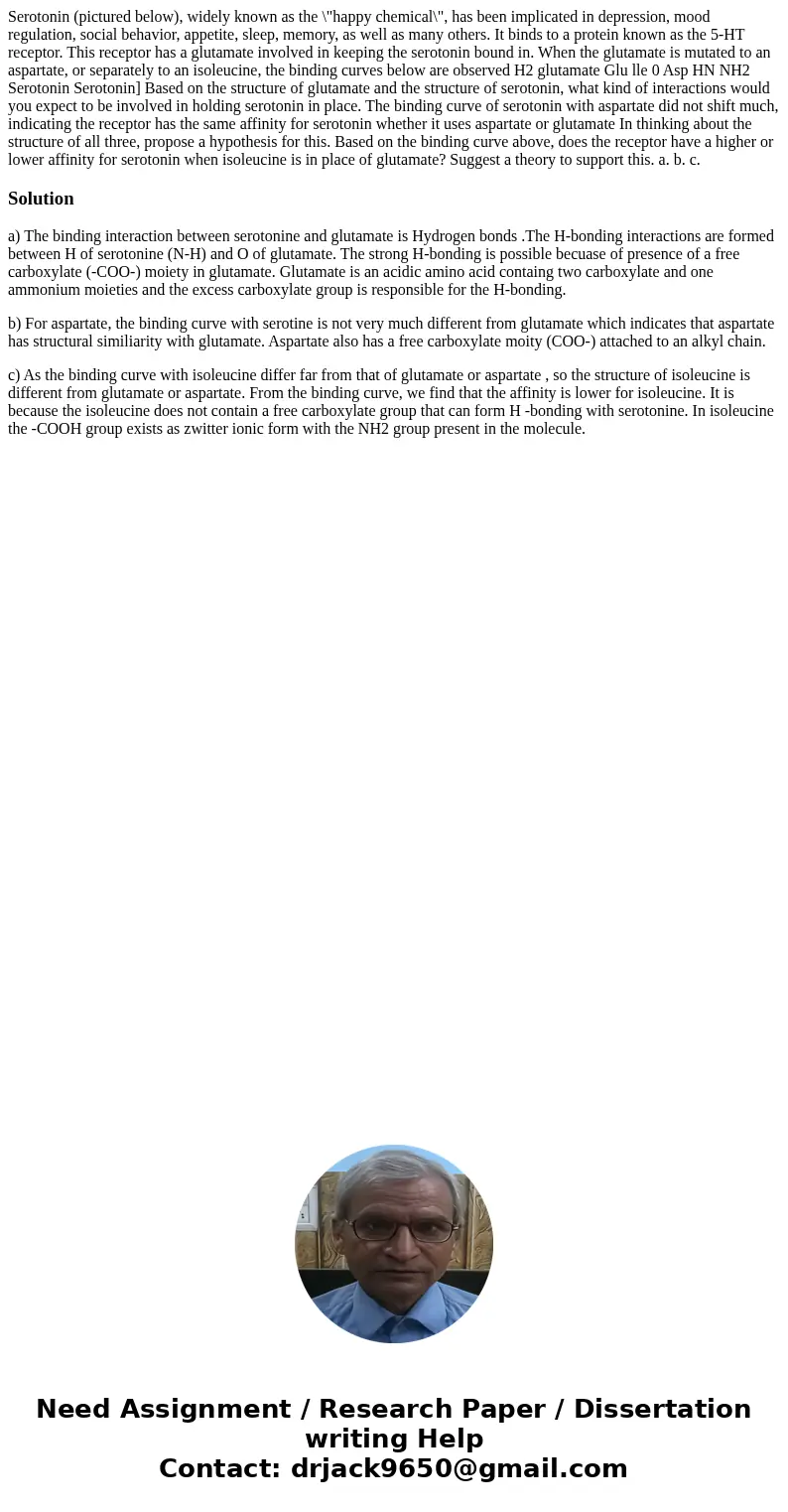Serotonin pictured below widely known as the happy chemical
Solution
a) The binding interaction between serotonine and glutamate is Hydrogen bonds .The H-bonding interactions are formed between H of serotonine (N-H) and O of glutamate. The strong H-bonding is possible becuase of presence of a free carboxylate (-COO-) moiety in glutamate. Glutamate is an acidic amino acid containg two carboxylate and one ammonium moieties and the excess carboxylate group is responsible for the H-bonding.
b) For aspartate, the binding curve with serotine is not very much different from glutamate which indicates that aspartate has structural similiarity with glutamate. Aspartate also has a free carboxylate moity (COO-) attached to an alkyl chain.
c) As the binding curve with isoleucine differ far from that of glutamate or aspartate , so the structure of isoleucine is different from glutamate or aspartate. From the binding curve, we find that the affinity is lower for isoleucine. It is because the isoleucine does not contain a free carboxylate group that can form H -bonding with serotonine. In isoleucine the -COOH group exists as zwitter ionic form with the NH2 group present in the molecule.

 Homework Sourse
Homework Sourse